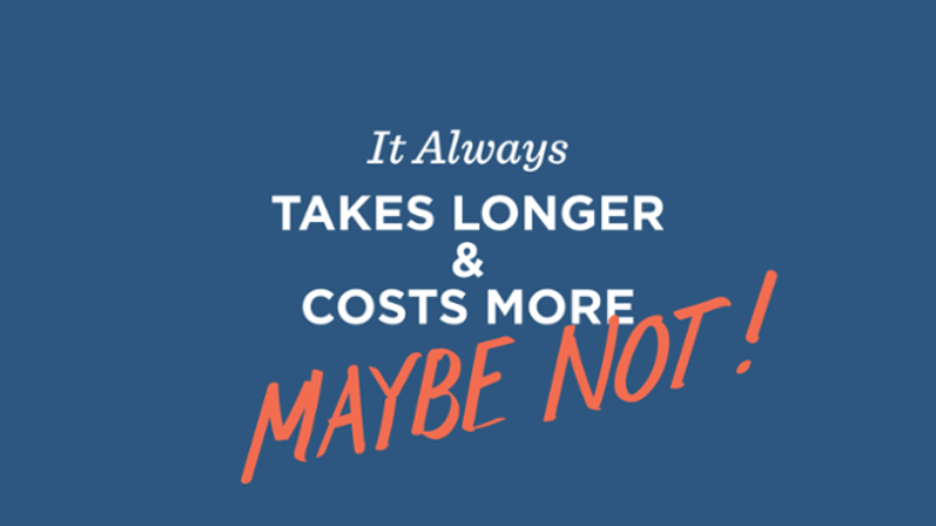The Sales Learning Curve
Good Founders, Bad Advice
You’re a founder. You have a business plan and an initial product. You’re ready to go to market and are starting to plot how you’ll gain some traction. You’ve gotten funding from great VCs, maybe even from Sequoia. You’ve got cash.
You’ve got growing expenses yet no revenue. You hire sales reps and also add to engineering so they can add new features, increase performance, and support customers.
This means you are consuming—burning through—a lot of cash. The fastest/least painful route to reduce the burn rate and meet the investors’ plan is to grow the revenue line as fast as possible.
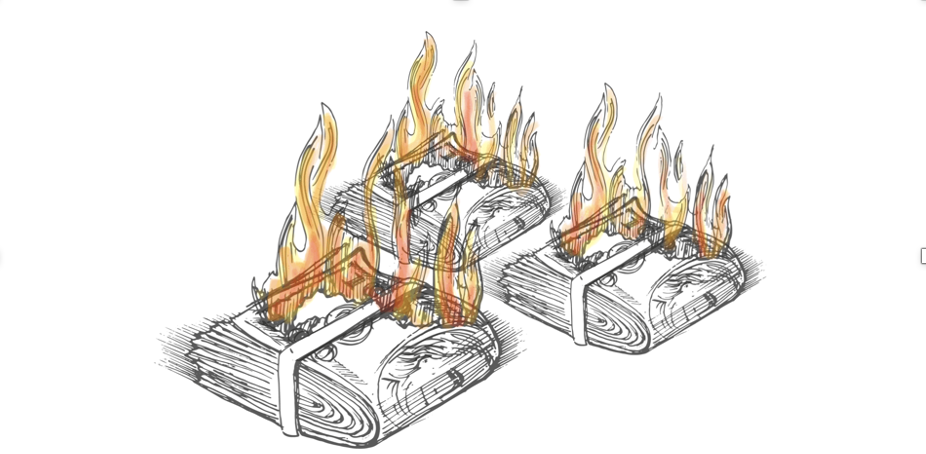
Many CEOs at this point are seduced by the siren call of rapid sales deployment. They say, “We will not forfeit any games by not showing up.”
They start to see business as a race to emerge from the pack and claim your first mover advantage.
The same CEOs probably are feeling overconfident. And not surprisingly; everyone’s saying, “The beta went great…The press loves you…” You say to yourself, “We’re hot!…and a lot smarter than the other guys!”
Even BuzzCrunch loves you.
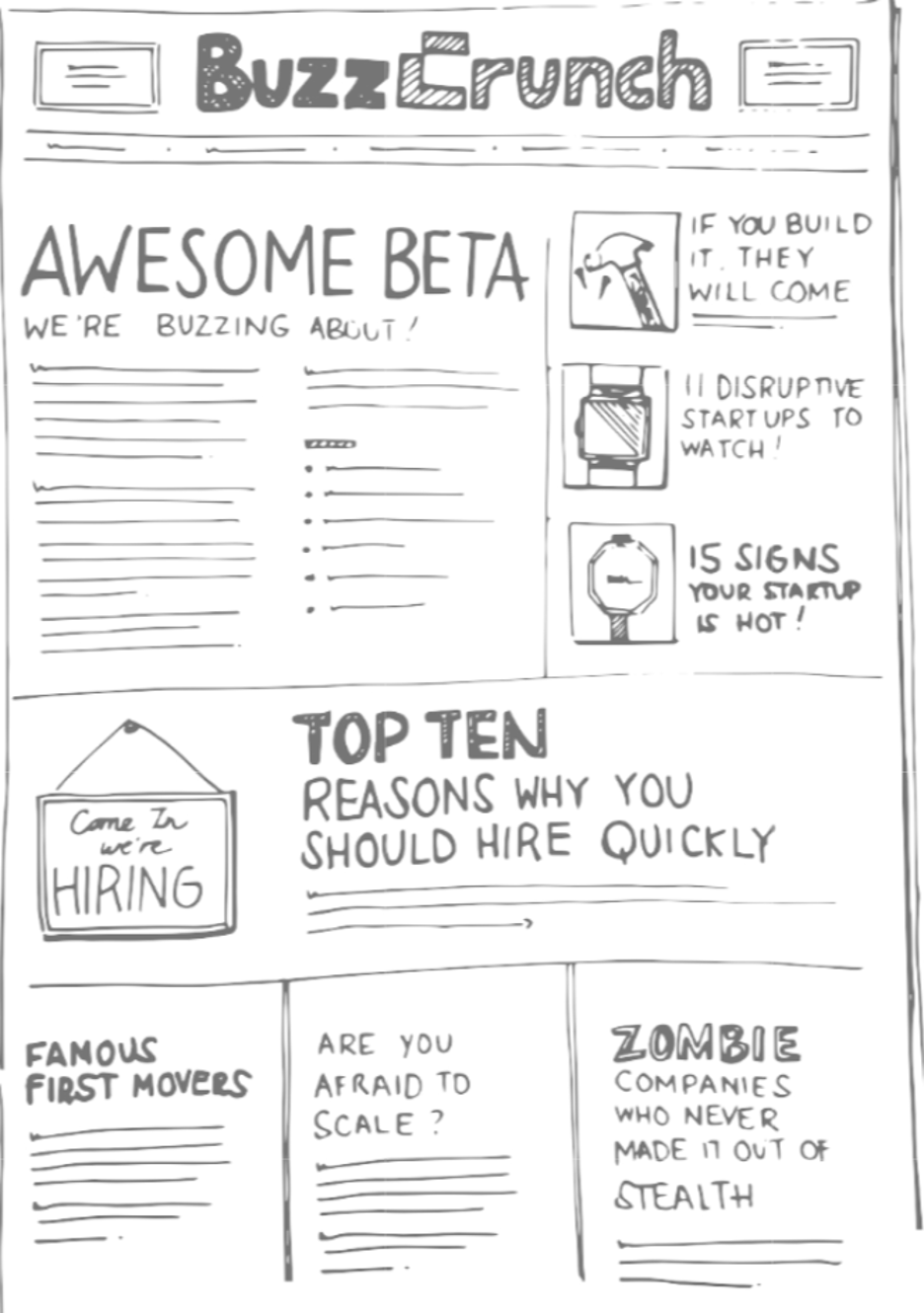
Hope vs. Reality
Your VP Sales sets a plan and hires the sales force based on an optimistic “Capacity Model” which estimates target quotas and how long it will take a sales rep to reach productivity, accounting for attrition.
You need to really ramp your hiring to become cash flow positive.
It’s a vicious circle. As you hire these not-yet-productive sales reps, you increase the burn rate of the company, which is why you hire so many reps.
You have high hopes. But will it work?
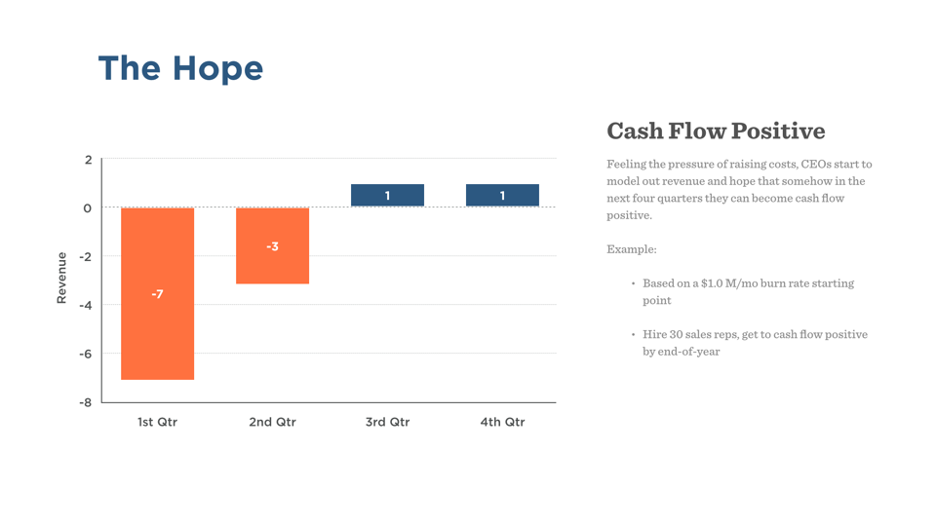
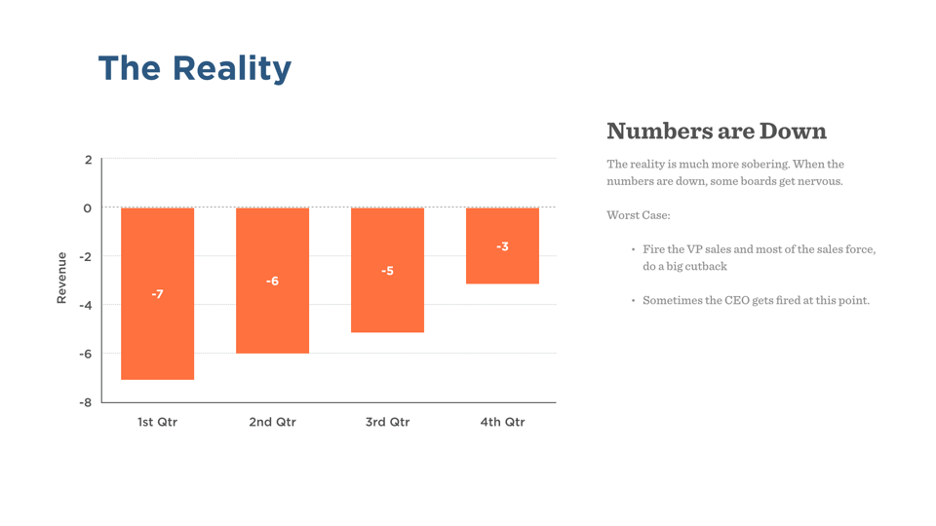
Unfortunately, things don’t turn out as you’d like. Four quarters later, you are still way behind your target and your burn rate is through the roof. Should you retrench? Cut back? Pivot?
If you’re a CEO, you might selfishly consider firing the VP Sales before the board fires you! If you fire the VP Sales and most of the sales force and do a big cutback, you’ll demoralize the company in the process.
In Silicon Valley we have been doing this for 50 years. It always takes longer and costs more!
This example isn’t an outlier. But is there another way? How did we get in this mess in the first place?
One day I was thinking about this and I had an epiphany…
The path to economic traction for a startup company is analogous to the idea embodied in the Manufacturing Learning Curve (MLC).
In manufacturing, costs start very high and decrease as volume increases. As you traverse this curve, you move from a net loss to profit.
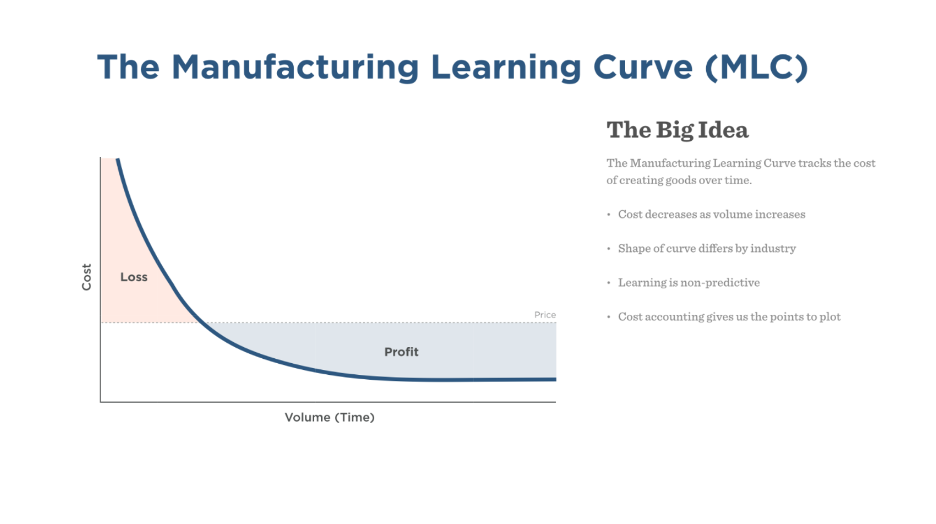
This is deeply embedded in the culture and planning of the semiconductor business (and the steel business) principally as a function of yield. It is why Intel prices new semiconductor products to maximize volume regardless of initial cost. They know that if they can get enough volume, they can drive the cost down and make a profit.
And, interestingly, this learning is non-predictive. Everyone knows they will come down the learning curve but no one knows what needs to be discovered week to week. Thus, the learning curve.
The Sales Learning Curve
I’d like to introduce you to a learning curve focused on going to market with a new product—the Sales Learning Curve. It’s analogous to MLC but focused on go-to-market instead of manufacturing.
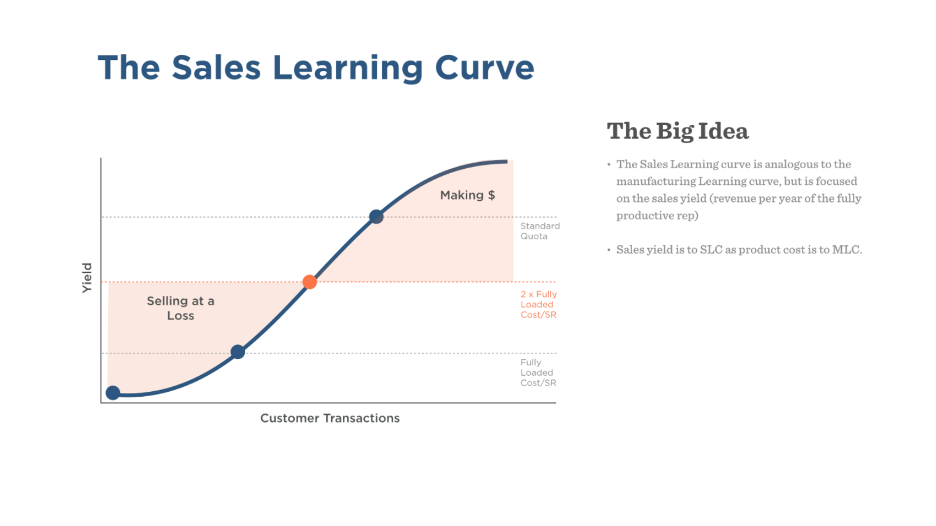
The key variable you measure in the SLC is sales yield (revenue per year of a fully productive sales rep). Like MLC, learning takes place in many non-predictive ways.
The learning in the SLC is an enterprise-wide endeavor (not just the sales department). It includes all customer facing parts of the organization: marketing, sales, product support, product development.
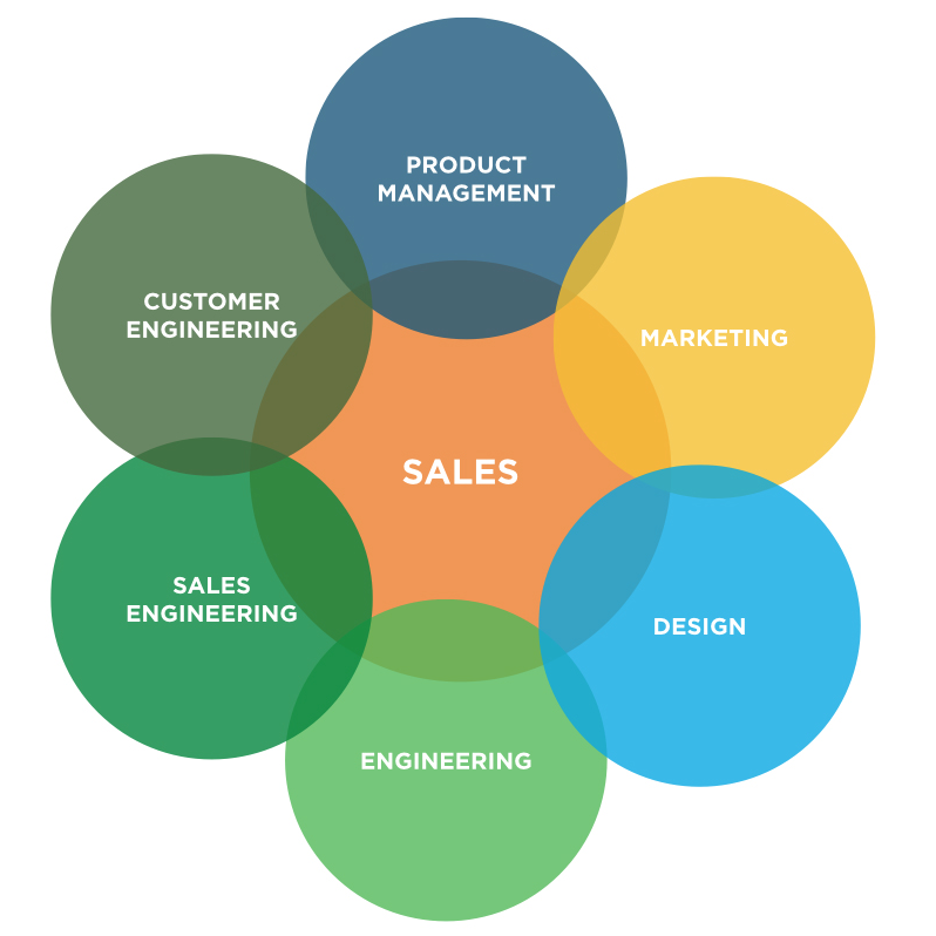
When you launch a new product, don’t just hire an army of salespeople and let them loose once you have your first product release. Think of this as another “development” cycle that the company has to go through.
The result: higher merchantability of the product and, therefore, higher sales yield.
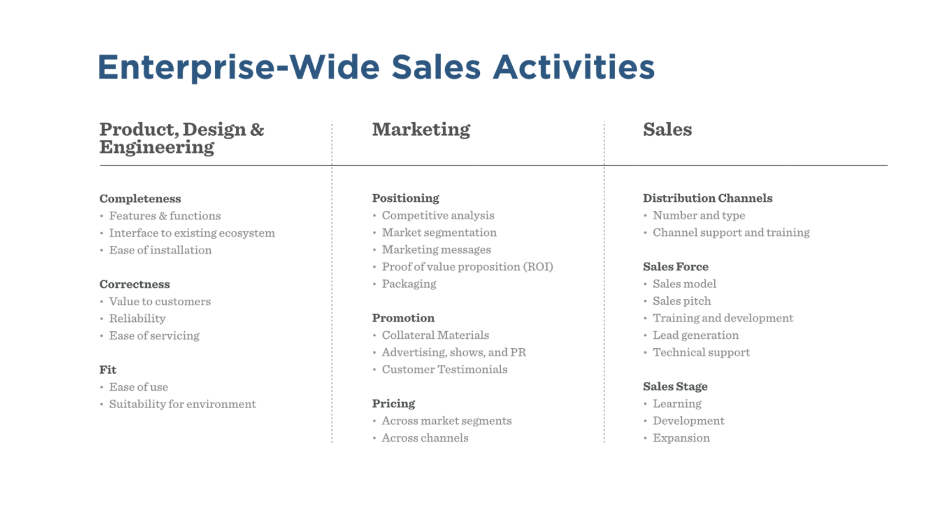
The Product team focuses on the completeness of the product (features and installability), correctness (does it do what it’s supposed to do?), scalability, maintainability, and its workability with the existing ecosystem.
The Marketing team does the four Ps: positioning, promotion, price, and place/distribution.
The Sales team takes care of the sales model, pitch, training and dev, executive selling, and manages the sales stage.
Three Phases of Sales Staffing
1. Initiation Phase

The Sales Learning Curve informs us of the initial staffing strategy for sales. Select three or four initial sales reps who will enhance corporate learning—the Renaissance Sales Rep or the Jack or Jill of all trades who can relate to product management, marketing and engineering teams as effectively as to the customer. It’s a good idea at this juncture to control costs and set investor expectations down to realistic levels.
2. Transitional Phase
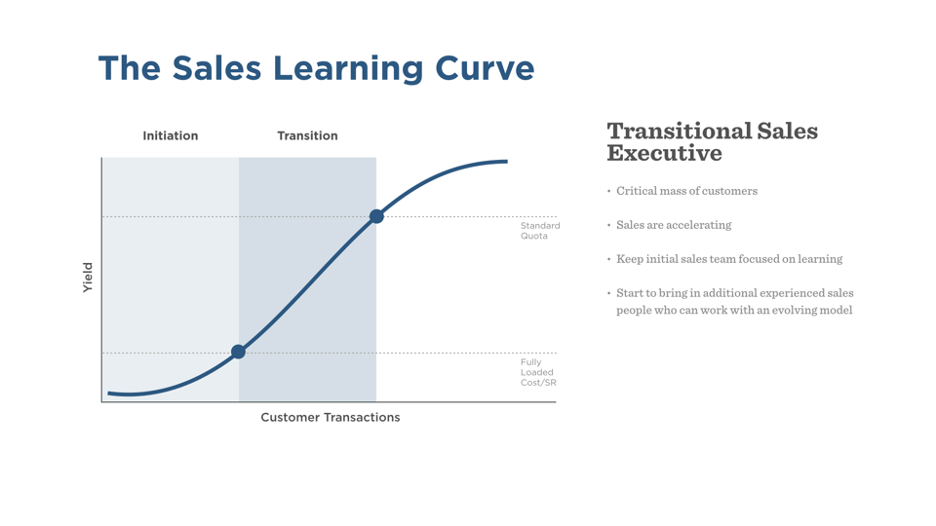
Next you have the transitional phase. You’ve got a critical mass of customers and sales are accelerating. Marginal contribution (contribution over and above their full costs) is becoming visible.
3. Execution Phase
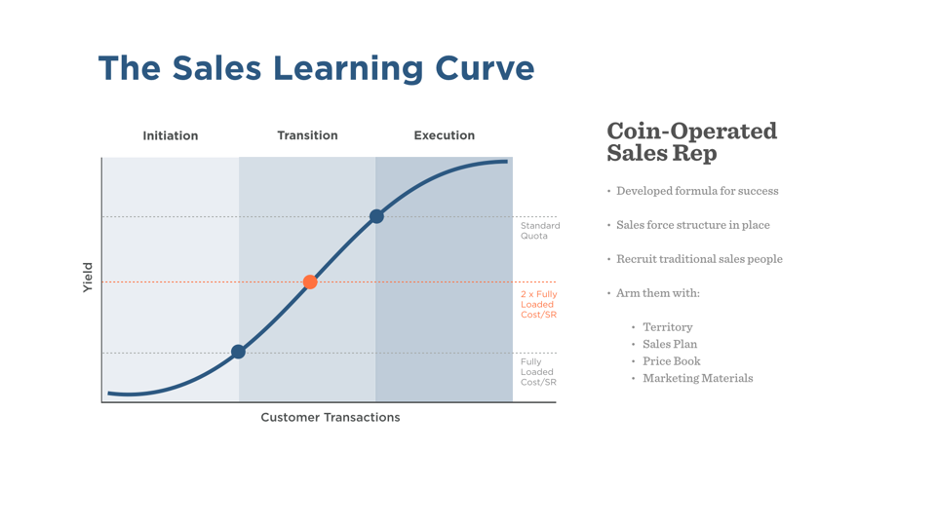
Lastly, the execution phase. You’ve reached Nirvana! This is where you have “pedal to the medal” staffing. You hire reps who might start at 2x their fully loaded cost and then reach standard quota quickly. These are coin-operated reps—people who just get out there and sell. Nice and simple.
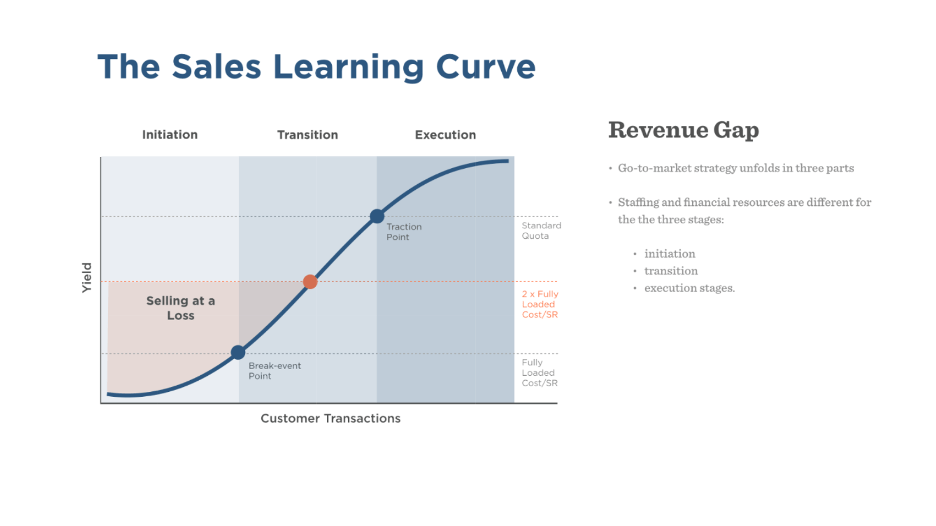
Until you reach your traction point, where your reps start making quota, you will have a revenue gap between what you pay your reps and what they bring in.
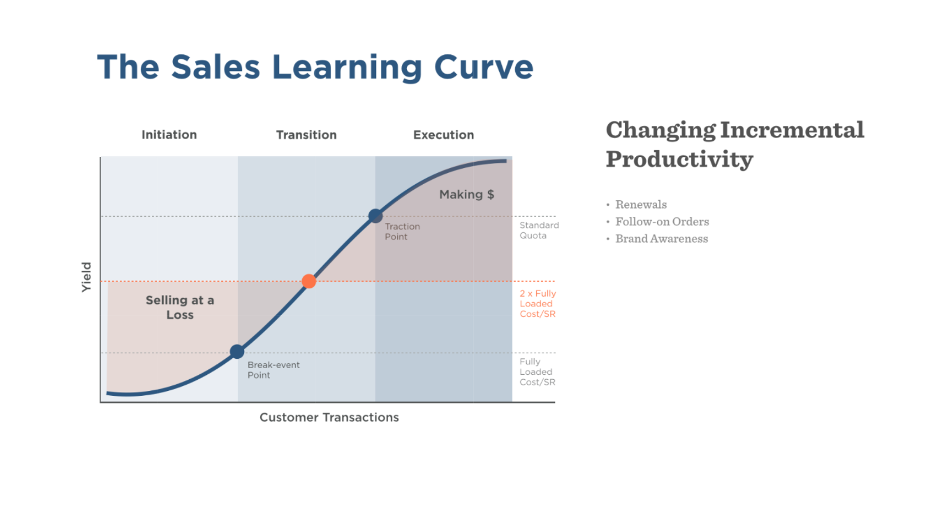
First you reach sales rep breakeven.
Then you reach traction: 2X fully loaded cost of a rep.
Finally, you absorb the other expenses so company can make a profit.
As the company progresses with renewals, follow on orders, and increased brand awareness, sales accelerate even beyond the traction point.
Impact on Capacity
The SLC talks to the yield of the fully productive sales rep. But that’s only part of the startup equation. When you hire new people, they each have a ramp up time. The typical ramp for the enterprise sales rep is 180 days. A shorter ramp has a huge impact on your revenue.
How do you calculate an individual’s sales yield? First you project revenue. For each rep, take the company’s gross margin, estimate a productivity ramp by quarter, and add in attrition.
Then you need to know total cost. You’ve got the cost of each rep: salary + commission. But that’s just the beginning.
You also have to consider what I call, “The wood behind the arrowhead.” These are all of the related costs associated with that single rep.
Get Real: It Takes a Village to Support Each Rep
When you add up a sales engineer’s target earnings and commission, sales management target earnings and commissions, payroll overhead, and other costs such as travel, entertainment and administration, this brings your fully loaded sales costs, including base and incentive pay, to $710K — much higher than $240K for a single rep.
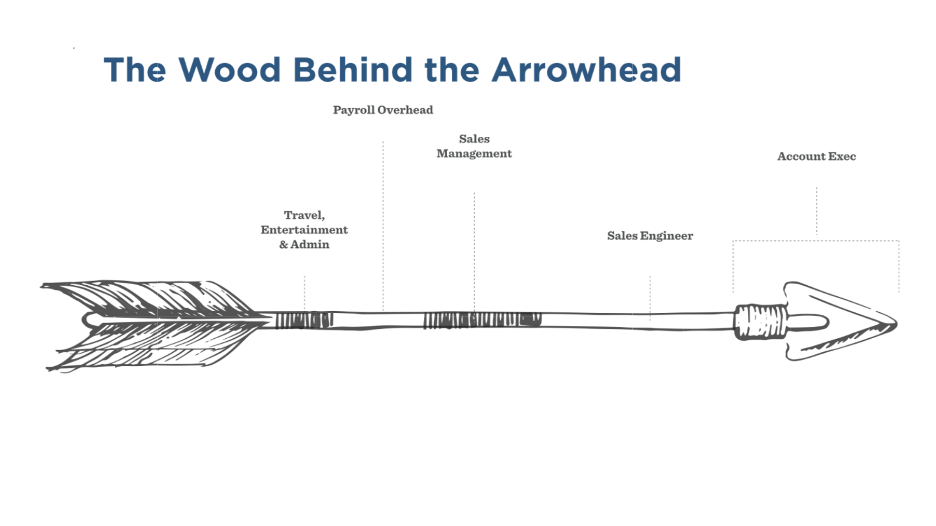
Capacity Planning
Figure out how much each rep will bring in at various productivity ramps to estimate your true ability to bring in revenue.
When you plan your sales team rollout, you need to assume that your reps won’t be immediately productive. In the example below, it takes four months before they bring in any revenue. By month seven, they’ve reached quota.
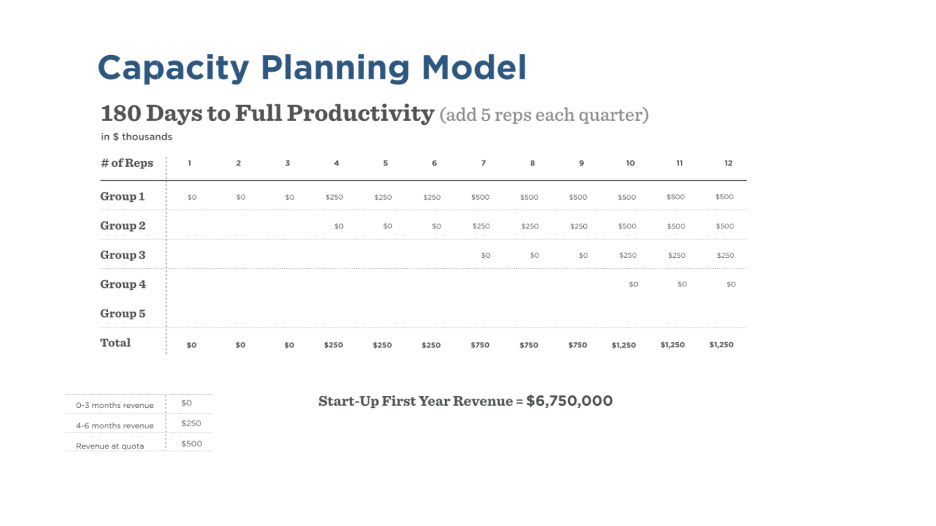
As you saw on the last chart, the big cost of growth in sales is paying for the ramp up of new reps. Once you are in the “pedal to the medal” high growth stage, you should put an intense focus on reducing ramp time.
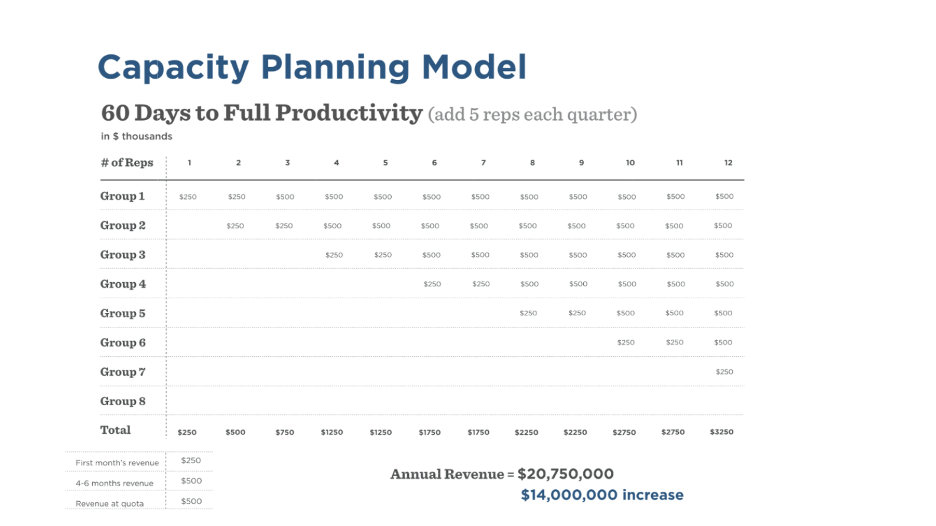
This chart below illustrates the impact of reducing ramp time by 2/3. If you could do this, you’d increase your sales by $14M!
Summary
Plan for enterprise-wide sales learning as a whole-enterprise endeavor Know when and how to hire the right people for the three different phases of sales staffing: Renaissance, Transitional, and Coin-Operated Reducing the ramp up time of reps dramatically increased revenue
Does it always take longer and cost more? If you plan your sales rollout and staffing with the Sales Learning Curve and reduce your productivity ramp up time, then maybe not! But to get there, you’ll need to learn to compress the Sales Learning Curve.
